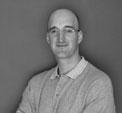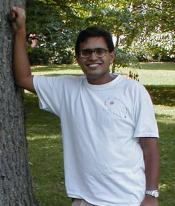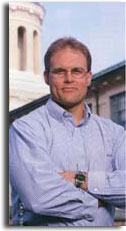|
My UW
|
UW Search
Computer Science Home Page
|
 |
| |

Computer Security and Cryptography Reading Group
April 2005 List
Thursday, April 7, 2005
1 PM - 2 PM
5331 CS
|
 G. Wurster
G. Wurster
 P.C. van Oorschot
P.C. van Oorschot
 A. Somayaji
A. Somayaji
G. Wurster, P.C. van Oorschot, A. Somayaji
Carleton University
A Generic Attack on Checksumming-Based Software Tamper Resistance
Oakland'05
URL: http://www.scs.carleton.ca/~paulv/papers/tamper.25feb05.pdf
Self-checking software tamper resistance mechanisms
employing checksums, including advanced systems as
recently proposed by Chang and Atallah (2002) and
Horne et al. (2002), have been promoted as an
alternative to other software integrity verification
techniques. Appealing aspects include the promise
of being able to verify the integrity of software
independent of the external support environment, as
well as the ability to automatically integrate
checksumming code during program compilation or
linking. In this paper, we show that the rich
functionality of many modern processors, including
UltraSparc and x86-compatible processors,
facilitates automated attacks which defeat such
checksumming by self-checking programs.
|
Thursday, April 14, 2005
1 PM - 2 PM
5331 CS
|
D.C. DuVarney, V.N. Venkatakrishnan, S. Bhatkar
SUNY Stony Brook
SELF: a Transparent Security Extension for ELF Binaries
The 2003 Workshop on New Security Paradigms
URL: http://portal.acm.org/citation.cfm?id=986661
The ability to analyze and modify binaries is often
very useful from a security viewpoint. Security
operations one would like to perform on binaries
include the ability to extract models of program
behavior and insert inline reference
monitors. Unfortunately, the existing manner in
which binary code is packaged prevents even the
simplest of analyses, such as distinguishing code
from data, from succeeding 100 percent of the
time. In this paper, we propose SELF, a
security-enhanced ELF (Executable and Linking
Format), which is simply ELF with an extra section
added. The extra section contains information about
(among other things) the address, size, and
alignment requirements of each code and static data
item in the program. This information is somewhat
similar to traditional debugging information, but
contains additional information specifically needed
for binary analysis that debugging information
lacks. It is also smaller, compatible with
optimization, and less likely to facilitate reverse
engineering, which we believe makes it practical for
use with commercial software products. SELF approach
has three key benefits. First, the information for
the extra section is easy for compilers to provide,
so little work is required on behalf of compiler
vendors. Second, the extra section is ignored by
default, so SELF binaries will run perfectly on all
systems, including ones not interested in leveraging
the extra information. Third, the extra section
provides sufficient information to perform many
security-related operations on the binary code. We
believe SELF to be a practical approach, allowing
many security analyses to be performed while not
requiring major changes to the existing compiler
infrastructure. An application example of the
utility of SELF to perform address
obfuscation (in which the addresses of all code
and data items are randomized to defeat memory-error
exploits) is presented.
|
Thursday, April 21, 2005
1 PM - 2 PM
7331 CS
|
 A. Perrig
A. Perrig
 M.K. Reiter
M.K. Reiter
J.M. McCune, A. Perrig, M.K. Reiter
CMU
Seeing-Is-Believing: Using Camera Phones For Human-Verifiable Authentication
Oakland 2005
URL: http://sparrow.ece.cmu.edu/~adrian/projects/sib.pdf
Current mechanisms for authenticating communication
between devices that share no prior context are
inconvenient for ordinary users, without the
assistance of a trusted authority. We present and
analyze Seeing-Is-Believing, a system that utilizes
2D barcodes and cameraphones to implement a visual
channel for authentication and demonstrative
identification of devices. We apply this visual
channel to several problems in computer security,
including authenticated key exchange between devices
that share no prior context, establishment of a
trusted path for configuration of a TCG-compliant
computing platform, and secure device configuration
in the context of a smart home.
|
Thursday, April 28, 2005
1 PM - 2 PM
7331 CS
|
 U. Maurer
U. Maurer
U. Maurer
ETH Zurich
New approaches to digital evidence
Proceedings of the IEEE, June 2004
URL: http://ieeexplore.ieee.org/xpl/abs_free.jsp?arNumber=1299168
Digital evidence, such as digital signatures, is of
crucial importance in the emerging digitally
operating economy because it is easy to transmit,
archive, search, and verify. Nevertheless, the
initial promise of the usefulness of digital
signatures was too optimistic. This calls for a
systematic treatment of digital evidence. The paper
provides a foundation for reasoning about digital
evidence systems and legislation, thereby
identifying the roles and limitations of digital
evidence, in the apparently simple scenario where it
should prove that an entity, A, agreed to a digital
contract, d. Our approach is in sharp contrast to
the current general views documented in the
technical literature and in digital signature
legislation. We propose an entirely new view of the
concepts of certification, time stamping,
revocation, and other trusted services, potentially
leading to new, sounder business models for trusted
services. Some of the, perhaps provocative,
implications of our view are that certificates are
generally irrelevant as evidence in a dispute, that
it is generally irrelevant when a signature was
generated, that a commitment to be liable for
digital evidence cannot meaningfully be revoked, and
that there is no need for mutually trusted
authorities like certification authorities. We also
propose a new type of digital evidence called
digital declarations, based on a digital recording
of a willful act indicating agreement to a document
or contract.
|
< Back to the Sec & Crypto reading group page
Created and maintained by Mihai Christodorescu ( http://www.cs.wisc.edu/~mihai)
Created: Fri Feb 04 16:32:13 2005
Last modified: Mon May 16 15:03:18 Central Daylight Time 2005
|
|
|
 |
